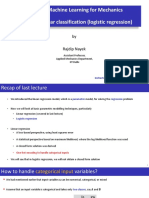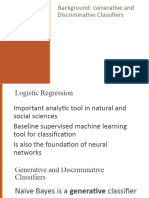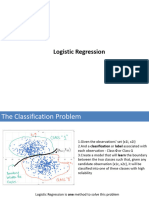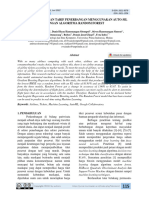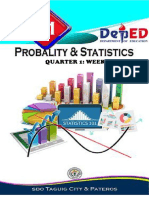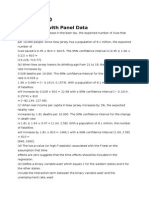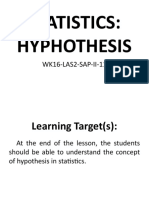0% found this document useful (0 votes)
14 views28 pagesLecture 5 - Logistic Regression
The document discusses logistic regression as a method for classification, outlining its formulation, cost functions, and optimization techniques. It emphasizes the use of cross-entropy loss and gradient descent for finding solutions, as well as extending logistic regression to multi-class problems. Key concepts include the sigmoid function, probabilistic views of classification, and regularization techniques.
Uploaded by
aeryaery0Copyright
© © All Rights Reserved
We take content rights seriously. If you suspect this is your content, claim it here.
Available Formats
Download as PDF, TXT or read online on Scribd
0% found this document useful (0 votes)
14 views28 pagesLecture 5 - Logistic Regression
The document discusses logistic regression as a method for classification, outlining its formulation, cost functions, and optimization techniques. It emphasizes the use of cross-entropy loss and gradient descent for finding solutions, as well as extending logistic regression to multi-class problems. Key concepts include the sigmoid function, probabilistic views of classification, and regularization techniques.
Uploaded by
aeryaery0Copyright
© © All Rights Reserved
We take content rights seriously. If you suspect this is your content, claim it here.
Available Formats
Download as PDF, TXT or read online on Scribd
/ 28



















